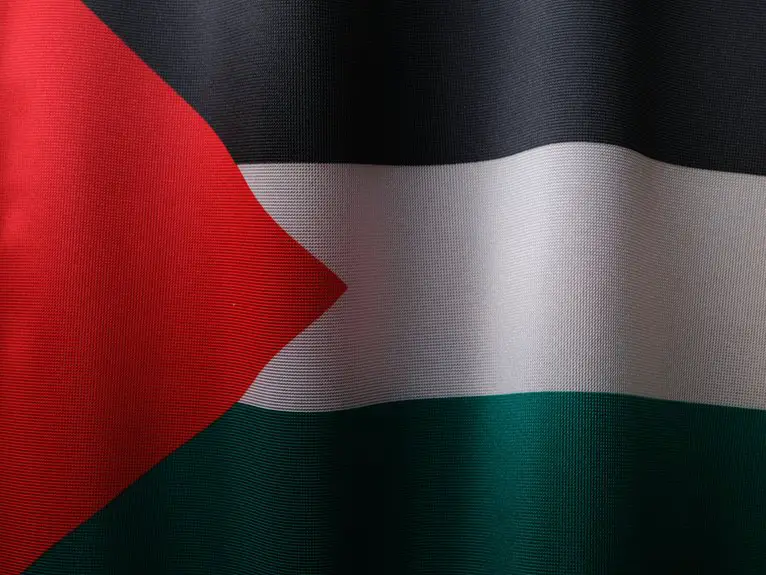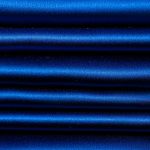Khadi fabric is a hand-spun, hand-woven cloth made from natural fibers like cotton, silk, or wool, deeply tied to India’s independence movement as a symbol of self-reliance and unity. By choosing Khadi, you support eco-friendly practices and rural artisans preserving traditional crafts. Its slightly coarse texture and unique weave show its authentic, handmade origin. If you want to discover how this freedom cloth blends heritage with modern fashion and boosts local economies, keep exploring further.
Table of Contents
Key Takeaways
- Khadi is hand-spun and hand-woven fabric made from natural fibers like cotton, silk, or wool, reflecting traditional Indian craftsmanship.
- It symbolizes India’s independence movement, promoting self-reliance and boycotting British goods during the Swadeshi movement.
- Khadi production supports rural artisans, sustainable practices, and eco-friendly methods, emphasizing slow fashion and mindful consumption.
- Authentic Khadi feels slightly coarse, softens with use, and bears irregular weave patterns, with certification like the Khadi Mark ensuring genuineness.
- Key Khadi-producing regions include Gujarat, West Bengal, Madhya Pradesh, and Tamil Nadu, each known for distinct textures and weaving styles.
The Historical Origins of Khadi Fabric
Although Khadi fabric has ancient roots, you mightn’t realize how deeply it’s tied to India’s struggle for independence. When you look back, Khadi began as a homespun cloth made from hand-spun cotton, evolving in villages where weaving was a daily craft.
Khadi’s humble beginnings as homespun cotton weave embody India’s spirit and independence journey.
You’ll find that this fabric wasn’t just about textiles; it symbolized self-reliance and simplicity. Its production involved spinning fibers into yarn with a charkha, a traditional spinning wheel.
When you touch Khadi, you’re feeling a fabric that’s breathable, natural, and made with care, reflecting centuries-old techniques passed down through generations.
Understanding Khadi’s origins means appreciating its role in rural Indian life long before it became a national emblem. It’s this rich history that gives Khadi its unique place in Indian culture.
The Role of Khadi in India’s Independence Movement
Khadi played a powerful role in India’s fight for independence, becoming more than just fabric—it became a symbol of resistance and unity.
When you wore khadi, you weren’t just choosing clothing; you were supporting the Swadeshi movement, which aimed to boycott British goods. Leaders like Mahatma Gandhi encouraged people like you to spin and wear khadi as a way to reject colonial rule and promote self-reliance.
By adopting khadi, you contributed to reviving rural economies and empowering local artisans. This cloth united millions across class and region, turning a simple fabric into a statement of freedom.
How Khadi Fabric Is Made: The Spinning and Weaving Process
Discovering how this iconic fabric comes to life reveals the dedication and skill behind every thread.
You start with hand-spinning fibers on a traditional spinning wheel called a charkha. This process transforms raw fibers into fine yarn, reflecting patience and craftsmanship.
Once spun, the yarn is carefully stretched onto handlooms, where skilled weavers interlace the threads to create the fabric. Each movement on the loom is deliberate, ensuring uniformity and strength in the cloth.
Unlike machine-made textiles, this manual method gives Khadi its unique texture and character. When you wear Khadi, you’re embracing centuries of artisanal tradition—every inch shaped by hands, not machines.
This intimate process honors the fabric’s cultural and historical significance, making Khadi more than just cloth.
Types of Fibers Used in Khadi Production
You’ll find that Khadi fabric is made from natural fibers like cotton, silk, and wool, each with unique qualities.
Understanding these fibers helps you appreciate how they affect the texture, durability, and feel of Khadi.
Let’s compare their characteristics to see what makes each fiber special in Khadi production.
Natural Fibers Overview
Although natural fibers have been used for centuries, their role in Khadi production remains essential today.
When you explore Khadi fabric, you’ll find it’s primarily made from cotton, silk, and wool. Cotton is the most common fiber, appreciated for its breathability and comfort, making Khadi ideal for warm climates. Silk adds a luxurious sheen and smooth texture, perfect for special occasions. Wool, on the other hand, provides warmth, especially in colder regions.
Each fiber is hand-spun and woven, preserving traditional techniques that contribute to Khadi’s unique character. By choosing natural fibers, you support sustainable and eco-friendly practices, since these materials are biodegradable and require less chemical processing than synthetic alternatives.
This connection to nature is a core reason Khadi remains relevant and cherished today.
Fiber Characteristics Comparison
When comparing the fibers used in Khadi production, you’ll notice distinct qualities that influence the fabric’s feel, durability, and suitability for different climates.
Cotton Khadi feels soft and breathable, making it ideal for hot, humid weather. It absorbs moisture well, keeping you cool and comfortable.
Wool Khadi, on the other hand, offers warmth and resilience, perfect for cooler temperatures. It’s thicker and provides natural insulation.
Silk Khadi stands out with its smooth texture and subtle sheen, adding elegance while remaining lightweight.
Each fiber also affects the fabric’s strength and longevity; cotton is durable but can wear down faster than wool, which is more robust.
Silk requires gentle care but adds a luxurious touch.
Understanding these differences helps you choose Khadi that fits your needs perfectly.
The Symbolism Behind Khadi as a Fabric
When you wear khadi, you’re embracing more than just fabric—you’re connecting with India’s identity and its fight for freedom.
Khadi became a powerful symbol during the freedom movement, representing self-reliance and resistance against colonial rule.
Understanding this symbolism helps you appreciate why khadi still holds a special place in Indian culture today.
Khadi and Indian Identity
Because Khadi emerged during India’s struggle for independence, it has become much more than just a fabric; it stands as a powerful symbol of self-reliance, unity, and national pride. When you wear Khadi, you connect with the spirit of a nation determined to shape its destiny. It represents simplicity, sustainability, and a commitment to local craftsmanship that defines Indian identity even today.
| Aspect | Meaning | Impact on You |
|---|---|---|
| Self-Reliance | Emphasizes independence | Encourages support for local goods |
| Unity | Brings diverse communities together | Fosters a sense of belonging |
| National Pride | Reflects cultural heritage | Instills pride in Indian traditions |
| Sustainability | Promotes eco-friendly choices | Inspires mindful consumption |
Khadi’s identity is woven into India’s fabric—literally and metaphorically.
Freedom Movement Connection
Khadi’s role in Indian identity naturally leads to its deep roots in the freedom movement. When you think about Khadi, you’re not just considering fabric; you’re connecting with a powerful symbol of resistance and self-reliance.
Mahatma Gandhi promoted Khadi to inspire Indians to boycott British textiles and revive local industries. By wearing Khadi, you actively participate in a statement against colonial rule and economic dependence. This fabric embodies the spirit of independence, unity, and simplicity.
Today, when you choose Khadi, you honor the sacrifices made during India’s struggle for freedom. It’s more than cloth—it’s a legacy woven with courage and conviction, reminding you of the nation’s enduring quest for sovereignty and dignity.
Khadi and Sustainable Fashion: An Eco-Friendly Choice
Although sustainable fashion has gained popularity recently, you mightn’t realize how perfectly khadi fits into this movement.
When you choose khadi, you support hand-spun, handwoven fabric made using minimal energy and no harmful chemicals. This traditional process reduces carbon footprints compared to mass-produced textiles.
Plus, khadi uses natural fibers like cotton, silk, or wool, which biodegrade much faster than synthetic alternatives. By wearing khadi, you help sustain rural artisans’ livelihoods, promoting fair wages and ethical labor practices.
Khadi’s natural fibers biodegrade quickly, supporting artisans with fair wages and ethical work conditions.
You also encourage slow fashion, valuing quality and durability over fast trends, which helps cut down on waste.
The Revival of Khadi in Contemporary Indian Fashion
You’ll notice modern designers are bringing khadi back with fresh styles that fit urban wardrobes perfectly.
Its sustainable and ethical appeal makes it a favorite for those wanting eco-friendly fashion choices.
Let’s explore how khadi is shaping contemporary Indian fashion today.
Modern Designers Embrace Khadi
As Indian fashion evolves, modern designers have enthusiastically embraced khadi, transforming it from a symbol of tradition into a statement of contemporary style. You’ll find khadi in sleek silhouettes, bold prints, and innovative textures, making it a favorite on runways and in everyday wardrobes. Designers blend khadi with modern cuts to appeal to younger audiences while honoring its heritage. Here’s a quick look at some key designers and their unique approaches to khadi:
| Designer | Style Focus | Signature Khadi Use |
|---|---|---|
| Ritu Kumar | Traditional fusion | Embellished khadi sarees |
| Masaba Gupta | Bold prints | Printed khadi dresses |
| Rahul Mishra | Handcrafted details | Intricate khadi embroidery |
| Anita Dongre | Sustainable luxury | Khadi jackets and gowns |
| Wendell Rodricks | Minimalist chic | Casual khadi separates |
Sustainable and Ethical Appeal
Beyond its rising popularity among designers, khadi’s true resurgence lies in its sustainable and ethical roots.
When you choose khadi, you support hand-spun, hand-woven fabric made without harmful chemicals or heavy machinery, which greatly reduces environmental impact.
Khadi production empowers rural artisans, promoting fair wages and preserving traditional skills.
You’re not just wearing fabric; you’re endorsing a movement against mass-produced, exploitative fashion.
This cloth embodies a slow-fashion ethos, encouraging you to value quality over quantity.
By embracing khadi, you contribute to a circular economy that respects both people and the planet.
Its breathable texture and natural fibers also mean you’re opting for comfort alongside conscience.
In this way, khadi stands as a powerful symbol of ethical fashion’s future.
Khadi in Urban Wardrobes
While khadi once symbolized rural tradition, it’s now making a bold statement in urban wardrobes across India. You’ll find designers blending khadi’s raw texture with modern cuts, making it perfect for office wear, casual outings, and festive occasions. Its breathable fabric suits city life, especially in warm climates. When you choose khadi, you support artisans and embrace a unique style that’s both ethical and chic. Here’s how khadi fits into your urban fashion:
| Style Element | Urban Appeal |
|---|---|
| Fabric Texture | Breathable, raw, natural |
| Design | Contemporary, tailored |
| Versatility | Workwear to casual |
| Sustainability | Eco-friendly, handcrafted |
| Cultural Value | Symbol of pride and heritage |
Key Regions in India Known for Khadi Production
Though khadi is woven throughout India, certain regions have earned a special reputation for their craftsmanship and unique styles.
Khadi craftsmanship shines in select Indian regions, each offering unique styles and textures.
If you want to explore authentic khadi, focus on these key areas:
- Gujarat – Known for its fine cotton khadi, Gujarat blends traditional techniques with vibrant patterns.
- West Bengal – Famous for soft, lightweight khadi, this region adds a distinct texture and elegance.
- Madhya Pradesh – Offers sturdy, coarse khadi, often used in durable clothing and home textiles.
- Tamil Nadu – Produces khadi with a smooth finish, often integrating local dyeing methods.
Differences Between Khadi and Other Handloom Fabrics
If you’re familiar with handloom fabrics, you’ll notice that khadi stands apart because it’s entirely hand-spun and hand-woven, unlike many other textiles that may use machine-spun yarns or power looms. This traditional process gives khadi a unique texture and breathability. Other handloom fabrics often involve mechanized steps, making their production faster but less distinctive. Khadi also carries cultural and historical significance tied to India’s freedom movement, which sets it apart beyond just its physical qualities.
| Feature | Khadi |
|---|---|
| Yarn | Hand-spun |
| Weaving | Hand-woven |
| Texture | Coarser, uneven, breathable |
| Cultural Significance | Symbol of Indian independence |
How to Identify Authentic Khadi Fabric
Recognizing the qualities that set khadi apart helps you spot authentic fabric when shopping. To make sure you’re choosing genuine khadi, keep these points in mind:
- Texture and Feel: Authentic khadi feels slightly coarse yet softens with use, unlike machine-made fabric, which feels uniformly smooth.
- Irregularities: Look for slight imperfections or unevenness in weave, a hallmark of hand-spun yarn.
- Natural Fibers: Genuine khadi uses 100% natural fibers like cotton, silk, or wool; synthetic blends indicate fake or mixed fabric.
- Certification: Check for a “Khadi Mark” or certification tag from the Khadi and Village Industries Commission (KVIC) to confirm authenticity.
The Economic Impact of Khadi on Rural Artisans
When you support khadi, you directly boost the livelihoods of rural artisans who rely on this craft for income.
Khadi production creates jobs in villages, helping reduce urban migration by offering stable work close to home. Your choice keeps traditional spinning and weaving skills alive, passed down through generations, ensuring these artisans maintain their cultural heritage.
By purchasing khadi, you contribute to fair wages and better working conditions, empowering artisans economically and socially. This demand also encourages local economies to thrive, as artisans buy raw materials and tools from nearby suppliers.
Ultimately, your support sustains a self-reliant community, promoting economic independence and preserving an essential part of India’s identity. Through your conscious buying, you play a key role in transforming rural livelihoods.
Styling Tips: Incorporating Khadi Into Modern Wardrobes
Although khadi carries a rich heritage, you don’t have to sacrifice modern style to wear it. This versatile fabric fits beautifully into contemporary wardrobes when styled thoughtfully.
Here’s how you can incorporate khadi into your daily looks:
- Pair a khadi shirt with slim-fit jeans for a casual yet polished vibe.
- Choose khadi skirts or trousers in neutral shades to mix and match effortlessly.
- Layer khadi jackets over simple tees to add texture and authenticity.
- Accessorize with minimalistic jewelry and leather footwear to keep the look balanced.
Frequently Asked Questions
Can Khadi Fabric Be Machine Washed?
Machine washing khadi might seem convenient, but it can weaken the fabric’s natural fibers. You should hand wash it gently in cold water to preserve its texture and strength, keeping that authentic feel intact.
Is Khadi Fabric Suitable for All Seasons?
Yes, khadi fabric suits all seasons because it’s breathable and lightweight in summer while providing warmth in cooler months. You’ll find it comfortable year-round, adapting naturally to temperature changes without feeling heavy or stiff.
How Durable Is Khadi Compared to Synthetic Fabrics?
You might think synthetics outlast khadi, but you’d be surprised—khadi’s natural fibers actually get stronger with use and washing. While synthetics can degrade faster, khadi’s durability only improves, making it a lasting, eco-friendly choice.
What Are Common Misconceptions About Khadi Fabric?
You might think khadi’s rough or outdated, but it’s actually soft and breathable. Many assume it’s less durable than synthetics, yet it’s strong and eco-friendly. Don’t underestimate its modern style and comfort.
Are There Any Famous International Designers Using Khadi?
You’ll find designers like Tom Ford and Stella McCartney embracing khadi for its sustainability and unique texture. They’re proving this traditional fabric fits perfectly into high-fashion, eco-conscious collections worldwide. You’ll see more global interest soon.







